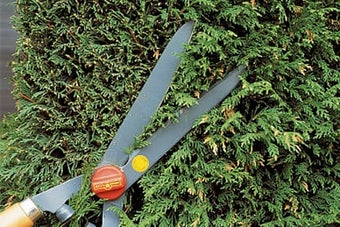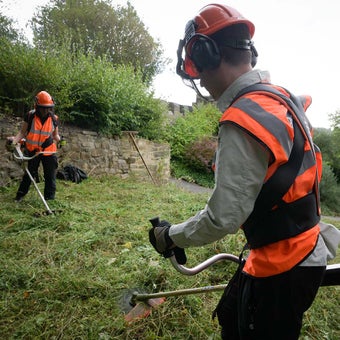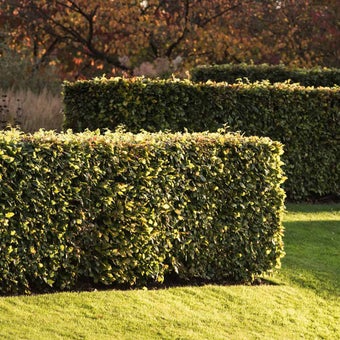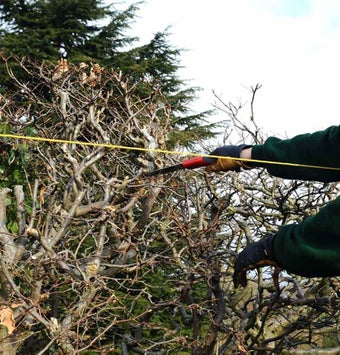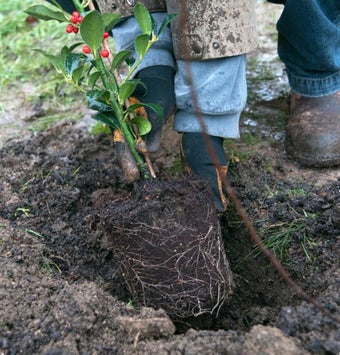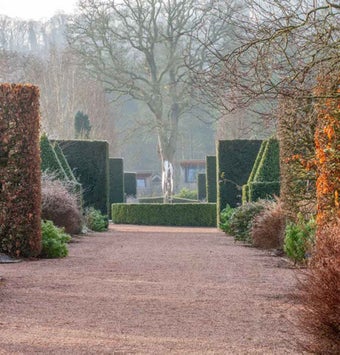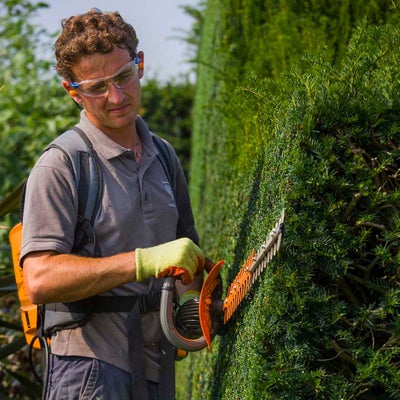
Quick facts
Formative pruning is carried out on young hedges and encourages bushy growth; maintenance pruning (trimming) keeps established hedges looking good
A hedge with dense growth can help to block noise, pollution and unsightly views
Keeping a formal hedge looking neat is time consuming, so an informal hedge is often a better option in low maintenance gardens
Getting started
Hand-held hedge shears are fine for smaller hedges, but for large hedges you'll probably find it easier to use a powered hedge trimmer. Many different types are available, including corded electric, battery-powered and petrol trimmers.
Their weight is an important factor to consider, particularly if you have a lot of hedging to cut. Other considerations are the length/reach of the blades (pole and telescopic handled trimmers with adjustable blades are available), whether it has a single or double-sided blade, and how powerful it is – the power plus the distance between the blade teeth determines the thickness of stems it will cut through.
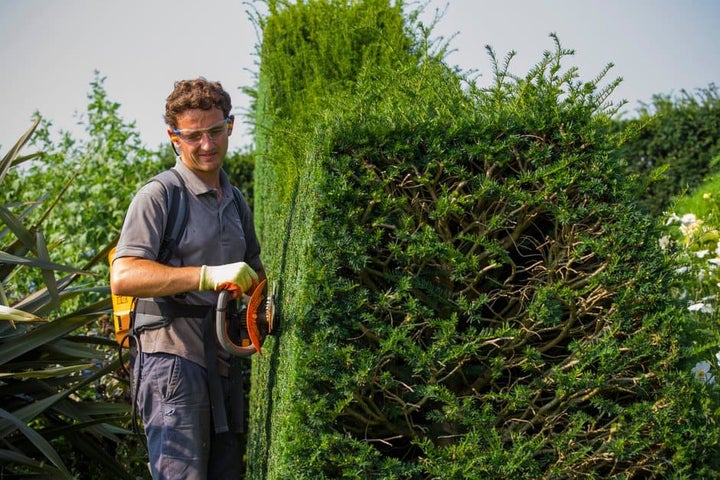
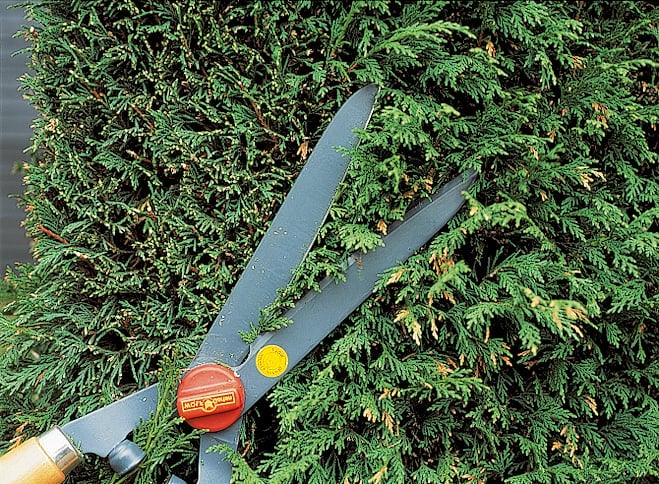
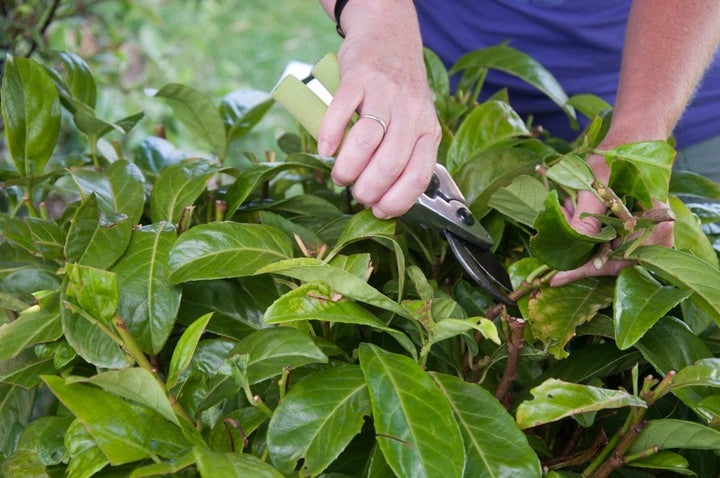
Big improvements in battery-powered hedge trimmers have been made in recent years, offering relatively light, quiet and effective options, without the worry of cables or the need for petrol and two-stroke oil. No matter what you use, always make sure the equipment is sharp, well-lubricated and in good working order.
If you have a large-leaved hedge, such as cherry laurel (Prunus laurocerasus), it’s best to prune individual stems with secateurs or loppers if you have the time, as using hand shears or hedge trimmers creates cut leaf surfaces that look unsightly.
Always think of your safety when using a powered hedge trimmer and wear safety goggles and thick gloves. Before starting, remove any obstacles on the ground. Try to avoid using powered tools above shoulder height and use sturdy tripod ladders, step ladders or platforms, ensuring they are stable. Tripod ladders with adjustable legs are useful when working from uneven ground. Electric hedge trimmers should ideally be used with a residual current device (RCD) and should not be used in damp conditions. Place the cable over your shoulder to help prevent it being accidentally cut. See our guide to electricity in the garden for more safety tips.
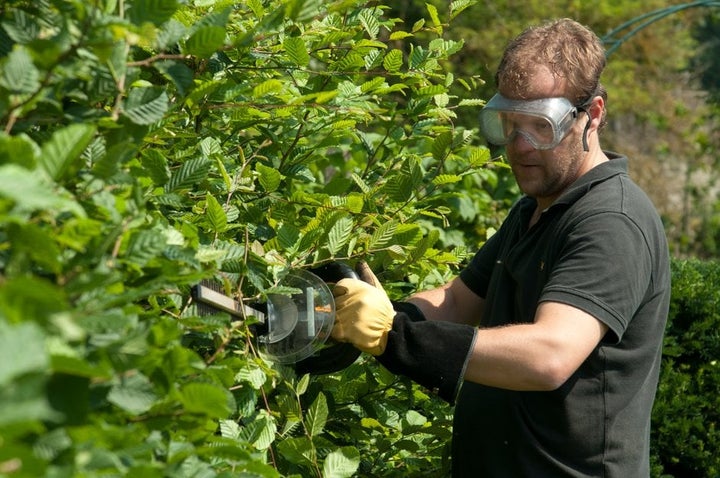
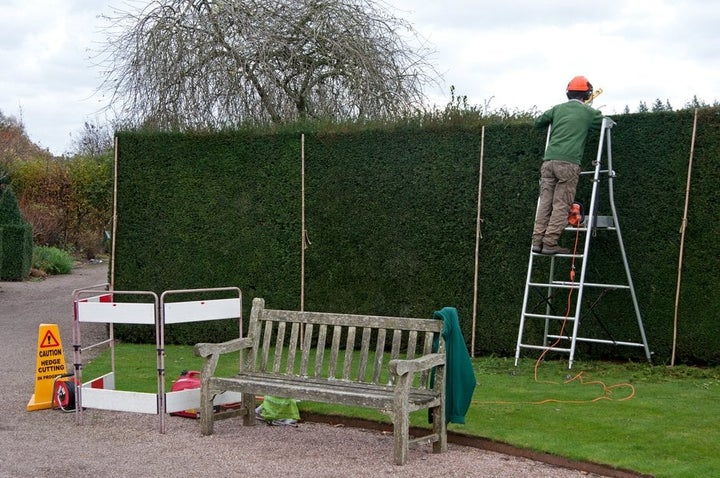
Techniques
Hedges may be formal, to create clear lines and boundaries, or informal, to more softly edge an area or create a colourful backdrop. Which type of hedge you grow affects the pruning technique you need to use:
Formal hedges
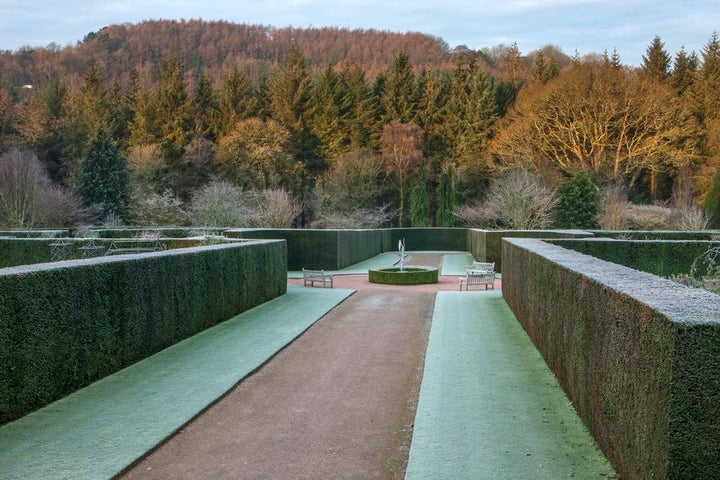
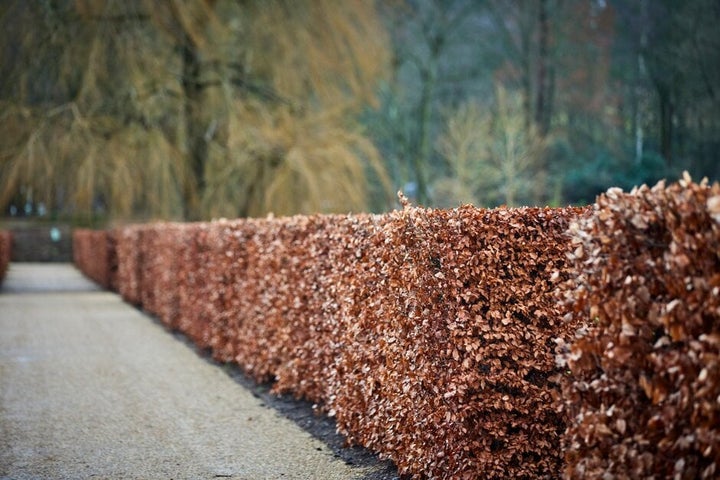
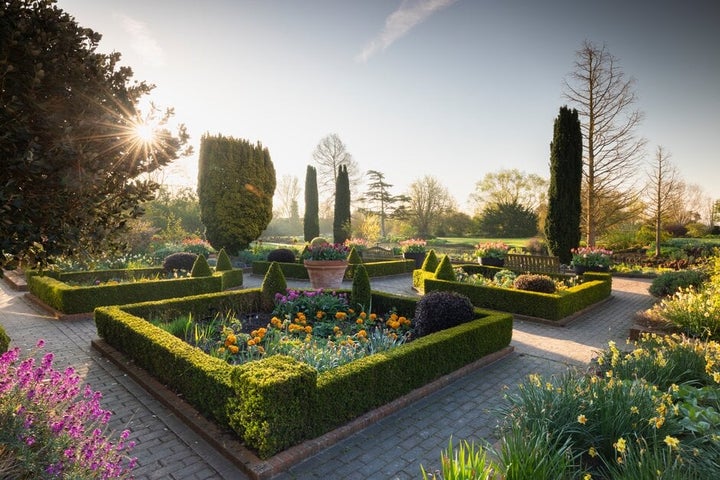
There is no need for the width of even vigorous hedges to exceed 60cm (2ft) if they are regularly trimmed. Formal hedges should be slightly tapered on both sides so that the base is wider than the top and light can reach the bottom of the hedge. This is known as cutting the hedge to a ‘batter’. Sides can also be cut with a ‘chamfer’, where the top section of a vertical side is cut at a 45° angle to meet the horizontal top.
Informal hedges
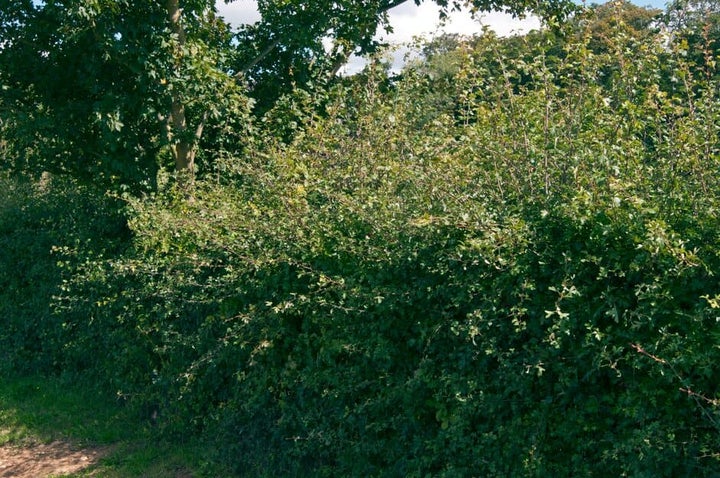
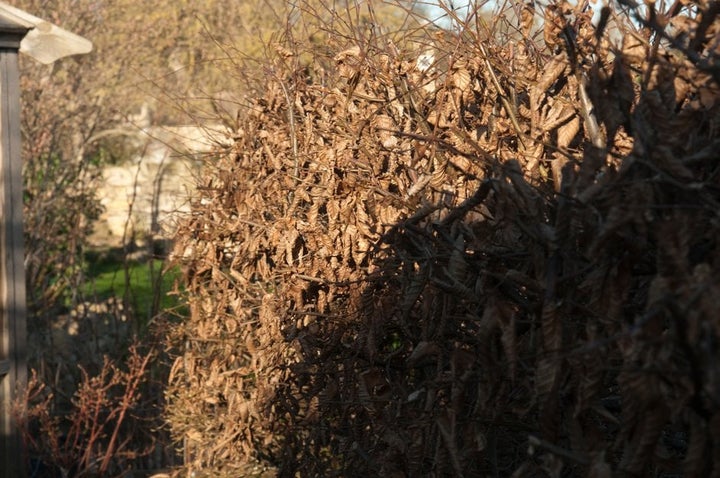
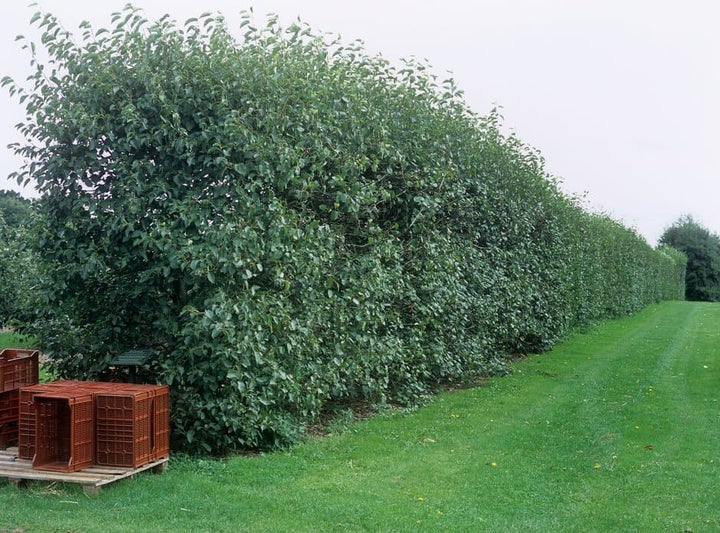
In general, informal hedges just need cutting back to the required size and any misplaced shoots removing. Using secateurs or loppers allows for a looser, more natural looking finish, and avoids unsightly leaf damage to large evergreen leaves.
Where flowers are desired on informal hedges, only prune once at the correct time of year to encourage flowering. Pruning at the wrong time of year could reduce or prevent flowering. See our guides to pruning evergreens, pruning summer-flowering shrubs and pruning early-flowering shrubs for information on pruning to maximise flowering.
Pruning young hedges
New hedges benefit from formative pruning for the first couple of years after planting. This helps to encourage bushy growth and a framework of branches that fill out the area you want. The timing of formative pruning depends on whether the hedge is or evergreen:
Formative pruning of deciduous hedges: In winter, just after planting and in the following winter – cut back leading upright shoots by about one-third, cutting just above a to encourage bushy growth. Shoots extending out from the hedge can also be cut back by about one-third to keep the hedge narrow at this early stage, cutting just beyond a well-placed bud.
Formative pruning of evergreen hedges: Leave the leading shoot unpruned. For the first two years after planting, trim back any straggly side shoots to encourage bushy growth – in summer for conifers and in spring for other evergreen hedging plants.
When to prune popular hedging plants
Once a hedge has reached a height and width you are happy with, maintain it with regular trimming to remove nearly all young (less than a year old) growth. This is usually carried out once a year on informal hedges, and once, twice or three times a year on formal ones.
While you may need to delay pruning to avoid disturbing nesting birds (see ‘Problems’ section below), these are the optimum timings for trimming hedges:
Formal hedges
Evergreen
Buxus sempervirens (box): Twice or three times during growing season
Ilex aquifolium (holly): Once in late summer
Ligustrum (privet): Twice or three times during growing season
Lonicera ligustrina var. yunnanensis: Twice or three times in growing season
Prunus laurocerasus: Prune twice during growing season
Conifers
Chamaecyparis lawsoniana (Lawson's cypress): Twice, in spring and summer
× Cuprocyparis leylandii (Leyland cypress): Twice or three times in growing season
Taxus baccata (yew): Twice, in summer and autumn
Thuja plicata: In spring and again in early autumn
Deciduous
Carpinus betulus (hornbeam): Once, in mid- to late summer
Crataegus monogyna (hawthorn): Twice, in summer and autumn
Fagus sylvatica (beech): Once, in late summer
Informal and flowering hedges
Evergreen
Berberis darwinii: Immediately after flowering
Cotoneaster lacteus: After fruiting
Escallonia: Immediately after flowering
Lavandula (lavender): Immediately after flowering
Pyracantha: Late summer
Deciduous
Berberis thunbergii: Immediately after flowering
Forsythia: After flowering, remove some older stems
Fuchsia magellanica: In spring, remove old stems
Rosa rugosa: In spring, remove thin twigs
Pruning an established hedge
The process of pruning a hedge is similar whether it's or evergreen, formal or informal. For step-by-step advice on pruning hedges, see our handy how-to guide to hedge trimming.
Problems
Nesting birds
When undertaking work on garden hedges, check first that there are no nesting birds, as it is an offence under the Wildlife & Countryside Act 1981 to damage or destroy the nest of any wild bird while it is in use or being built. The nesting season is usually considered to run from March to August, but it can be longer.
Overgrown hedges
Even regularly trimmed hedges gradually get bigger over time, and those growing near or on boundaries can quickly start to overhang the street or pavement. Luckily, most hedges can be successfully reduced in size, some significantly, and will reshoot from old wood. However, most conifers (yew is an exception) will not reshoot from old wood, so they must be trimmed regularly to keep growth dense and to the desired size. If you inherit an overgrown conifer hedge, it is better to consider replacing it than attempt renovation.
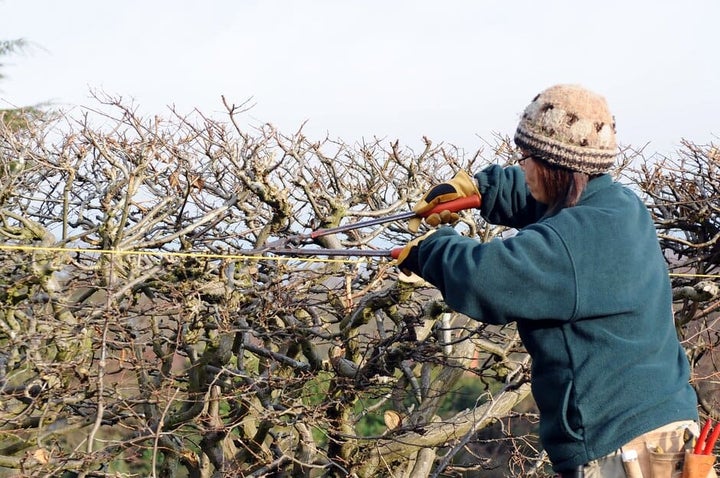
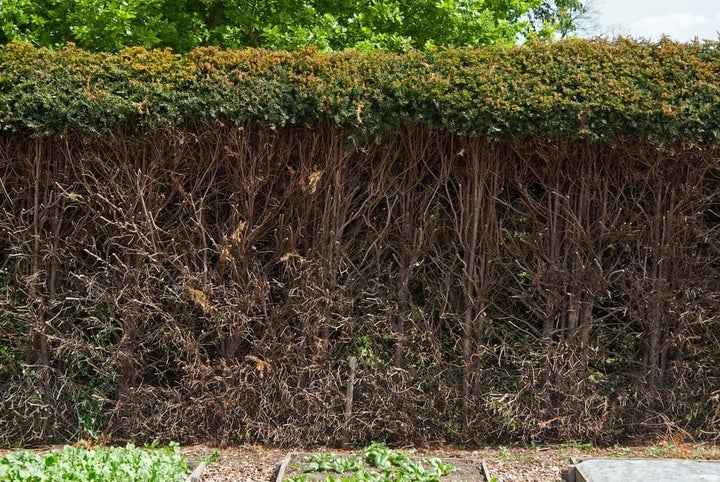
For more advice, see our guide to renovating hedges and our guide to nuisance and overgrown hedges.
Other problems
Trimming conifer hedges after August can encourage bare patches, so try to trim earlier in the season.
Some gardeners have reported skin irritations after handling Thuja plicata(western red cedar) trimmings, so it is advisable to wear long sleeves in addition to gloves and goggles when pruning these hedges. For guidance on other plants which may cause irritation, see our guide to potentially harmful garden plants.
Tall hedges can be difficult and unsafe to tackle yourself, requiring specialist equipment. See our guide to hiring gardeners and contractors if you want to find a reputable company to trim a hedge for you.
Hedge pruning can generate a large amount of . See our simple guide to dealing with garden waste for ways to use and dispose of hedge trimmings.


